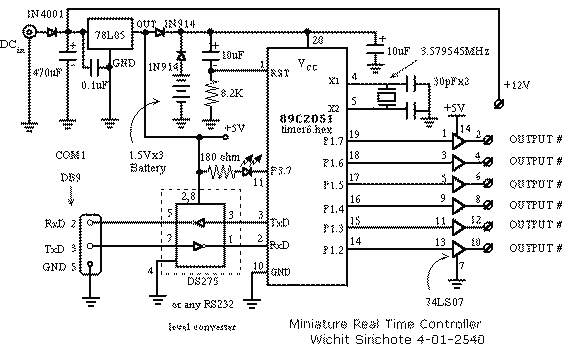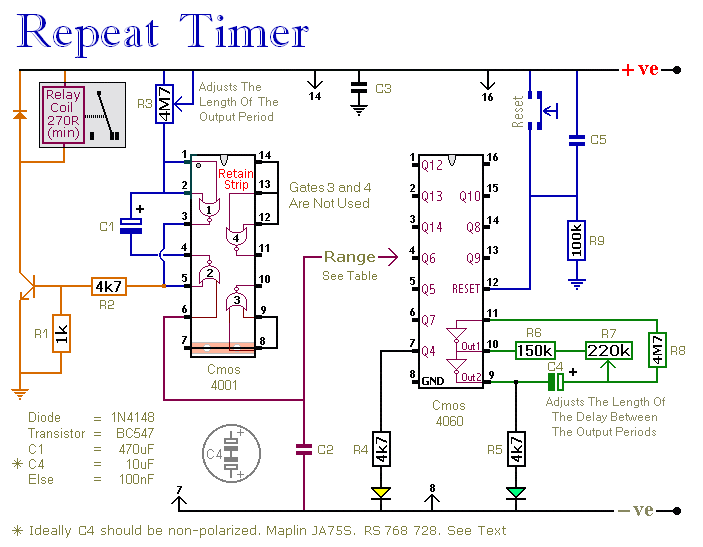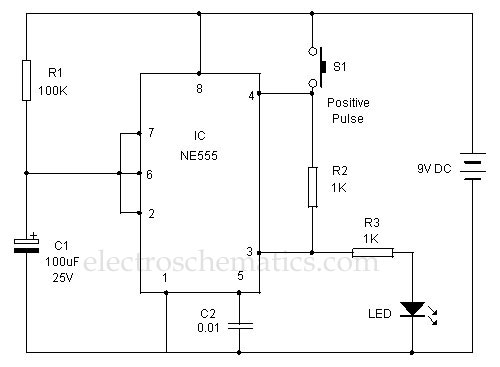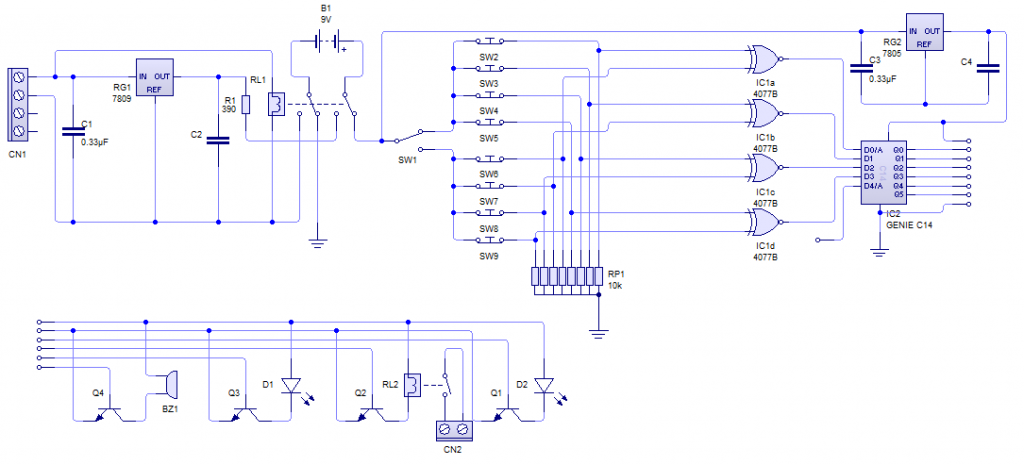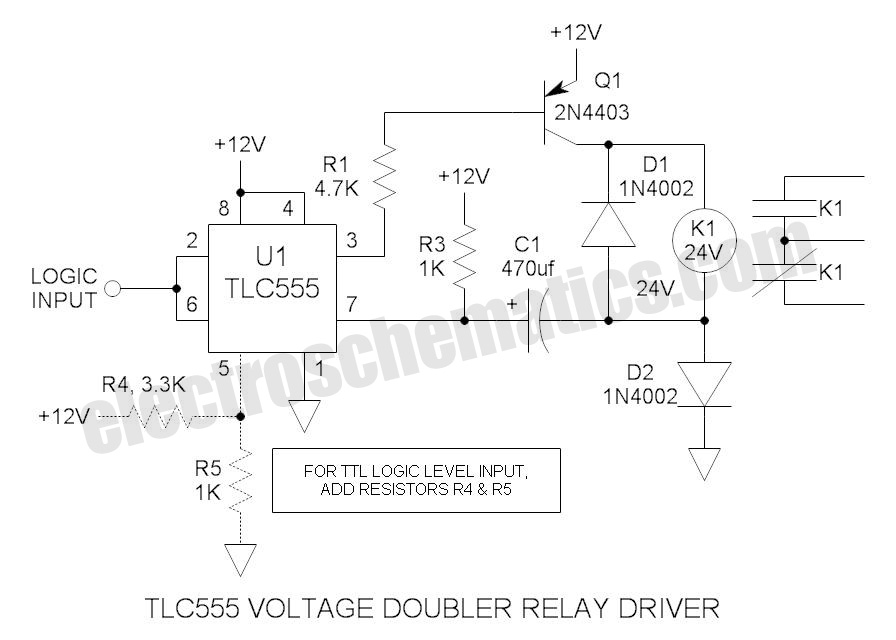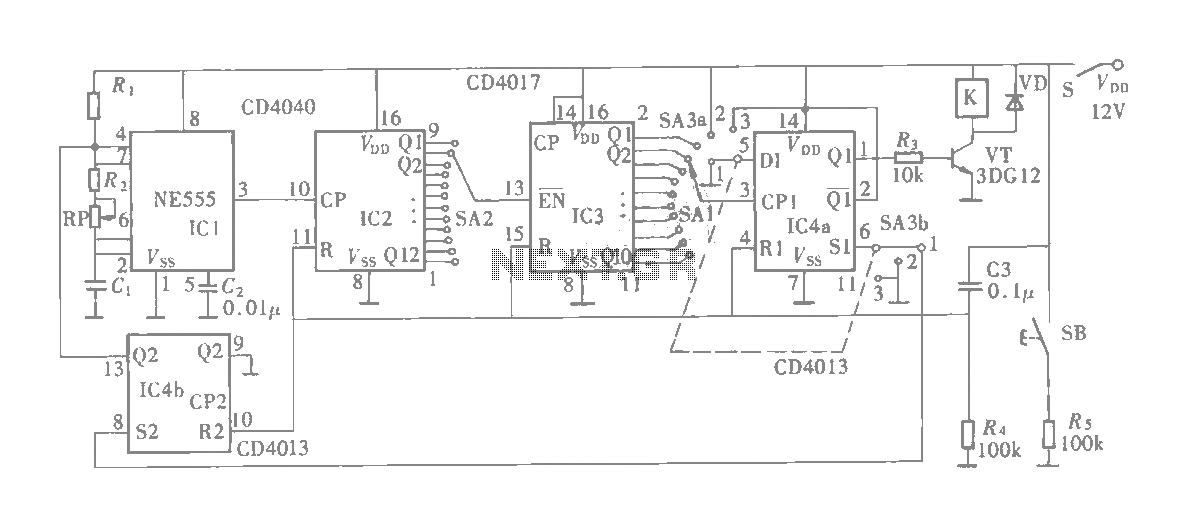
Power-On Time Delay Relay With LM339 IC
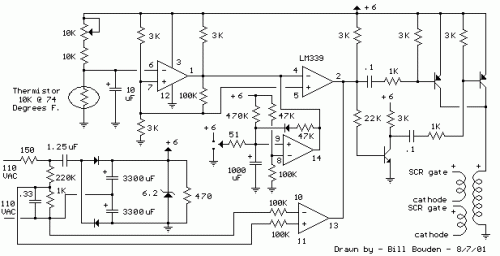
The thermostat circuit is designed to control a 1300-watt space heater using a small pulse transformer. Component: LM339 IC.
The thermostat circuit utilizes an LM339 integrated circuit (IC) to manage the operation of a 1300-watt space heater. The LM339 is a quad comparator that can compare voltage levels and provide output signals based on these comparisons. In this application, the circuit is configured to monitor the temperature of the environment and activate or deactivate the heater accordingly.
The circuit typically includes temperature sensors, such as thermistors or thermocouples, which provide a voltage output proportional to the temperature. These sensors are connected to the inputs of the LM339. The reference voltage for the comparators can be set using a voltage divider or a potentiometer, allowing for calibration of the desired temperature threshold.
When the temperature falls below the set point, the output from the LM339 changes state, triggering a control mechanism, often through a relay or a solid-state switch, to turn on the heater. Conversely, when the temperature exceeds the set threshold, the LM339 output will deactivate the heater, ensuring that the space remains within the desired temperature range.
The use of a small pulse transformer in the circuit provides electrical isolation between the control circuit and the high-power heater, enhancing safety and preventing damage to the control components. Additionally, the transformer can help to reduce electromagnetic interference, ensuring stable operation of the thermostat.
Overall, this thermostat circuit efficiently manages the heating process, optimizing energy consumption while maintaining comfort in the controlled environment.The thermostat circuit built to control a 1300 watt space heater which are controlled with a small pulse transformer. Component: LM339 IC, .. 🔗 External reference
The thermostat circuit utilizes an LM339 integrated circuit (IC) to manage the operation of a 1300-watt space heater. The LM339 is a quad comparator that can compare voltage levels and provide output signals based on these comparisons. In this application, the circuit is configured to monitor the temperature of the environment and activate or deactivate the heater accordingly.
The circuit typically includes temperature sensors, such as thermistors or thermocouples, which provide a voltage output proportional to the temperature. These sensors are connected to the inputs of the LM339. The reference voltage for the comparators can be set using a voltage divider or a potentiometer, allowing for calibration of the desired temperature threshold.
When the temperature falls below the set point, the output from the LM339 changes state, triggering a control mechanism, often through a relay or a solid-state switch, to turn on the heater. Conversely, when the temperature exceeds the set threshold, the LM339 output will deactivate the heater, ensuring that the space remains within the desired temperature range.
The use of a small pulse transformer in the circuit provides electrical isolation between the control circuit and the high-power heater, enhancing safety and preventing damage to the control components. Additionally, the transformer can help to reduce electromagnetic interference, ensuring stable operation of the thermostat.
Overall, this thermostat circuit efficiently manages the heating process, optimizing energy consumption while maintaining comfort in the controlled environment.The thermostat circuit built to control a 1300 watt space heater which are controlled with a small pulse transformer. Component: LM339 IC, .. 🔗 External reference
